By Heidi Ware Carlisle, IBO Education and Outreach Director
Looking back on the season, my favorite part of 2021 is easy to choose. This year more than ever I absolutely loved watching the students and community members we work with doing some amazing science at the Diane Moore Nature Center!
As we began gearing up for the side-channel construction, there was a flurry of activity to collect data on the site and get a complete picture of what the habitat was like pre-restoration.
As always, integrating K-12 and community education into the scientific process was at the core of our research activities.
Habitat
This year I’m proud to say I didn’t personally collect a single data point! Our entire restoration monitoring effort was organized and led by university students, and K-12 students helped collect data.
More than 70 students from Boise State University’s Ecology lab visited the site to collect information on seed production in our habitat restoration plots.
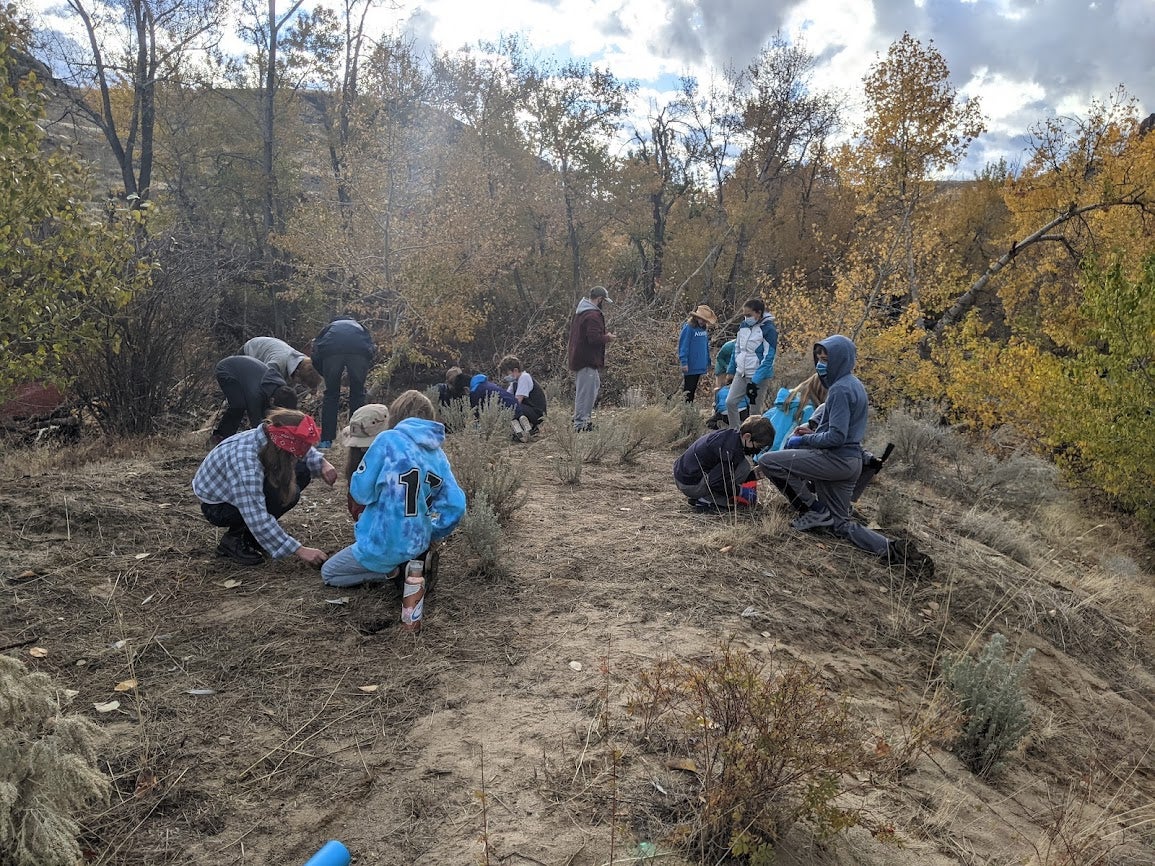
Students from the Treasure Valley as well as The Sage School in Hailey tested the effectiveness of springtime planting for Curlycup Gumweed (Grindelia squarrosa). To my surprise, it turns out that it survives quite well!
Our team of summer interns from Boise State University and College of Western Idaho worked diligently to keep our seedlings alive during the hot summer weather, and also continued to collect data on our seedling’s survival and restoration success. The Native Plant Network will use what we’ve learned at the Diane Moore Nature Center to plan the upcoming East Boise Riparian Corridor Project.
This community effort will expand restoration to more than 50 acres of river habitat beginning next year!
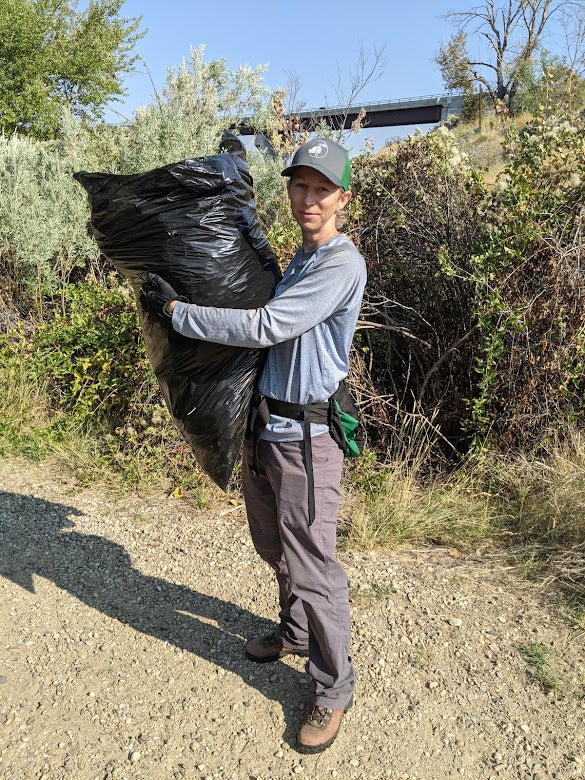
Birds
I’m grateful this year that we were able to host a more complete bird banding team compared to our 2020 skeleton crew. And in 2021 we had a record number of students join us, including four high schoolers and seven undergraduates!
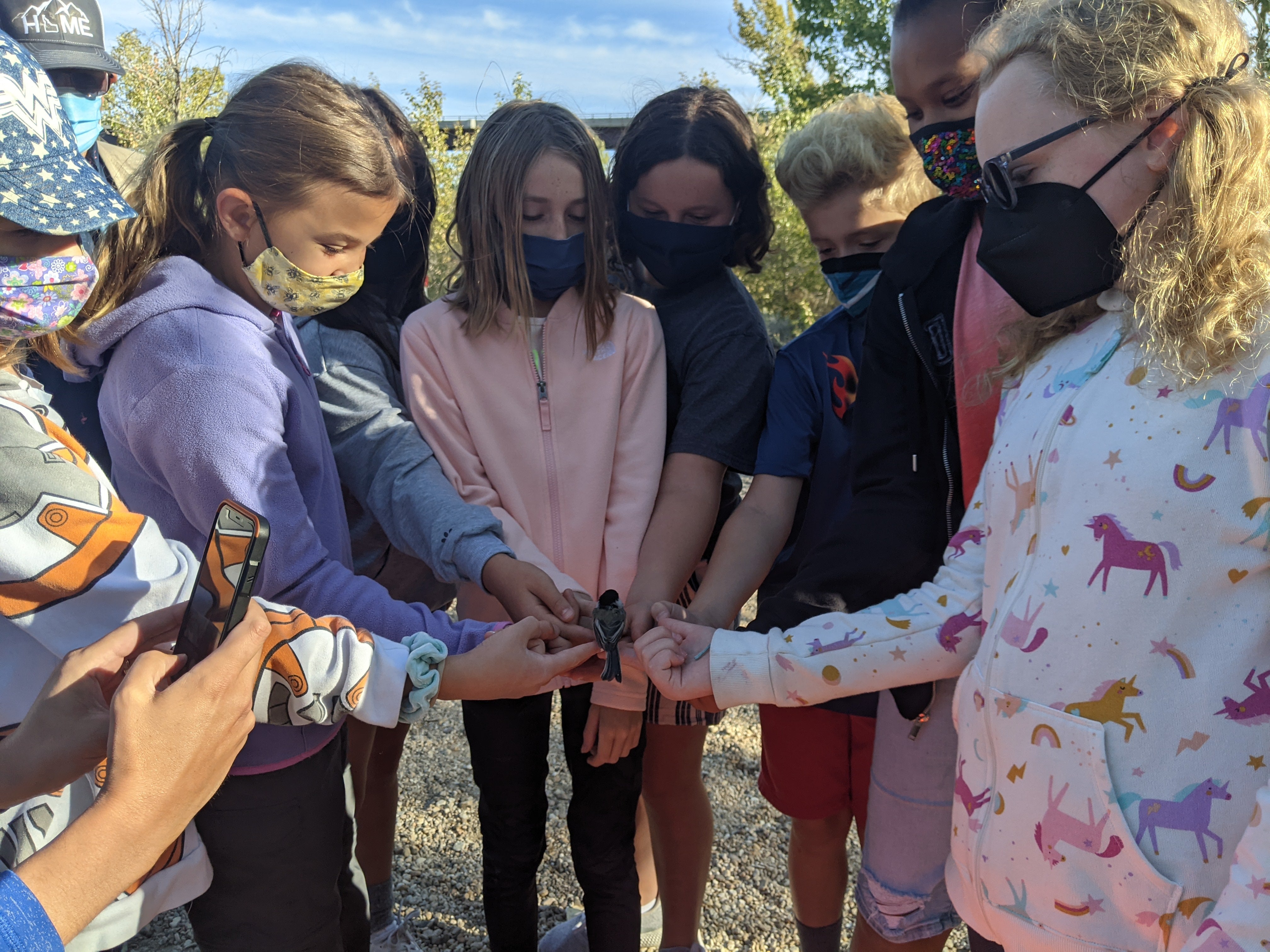
Watching our more experienced volunteers train new members was especially rewarding for me! And thanks to the team’s hard work, we banded 430 songbirds during our breeding season banding, and 319 birds during our fall migration research. One of the most exciting aspects of our summer banding season was adding CTT Life Tags on 3 Yellow-breasted Chats.
These tags will hopefully be picked up by one of the Motus towers we’ve installed or, even better, one from along their migration!
You can read more about this project in Jeremy’s article.
Water
For the first time this year, we worked with the City of Boise’s Watershed Watch program to bring 5th graders out to survey at our site.
Students got hands-on in every step of the process, including testing dissolved oxygen, recording pH, and measuring temperature.
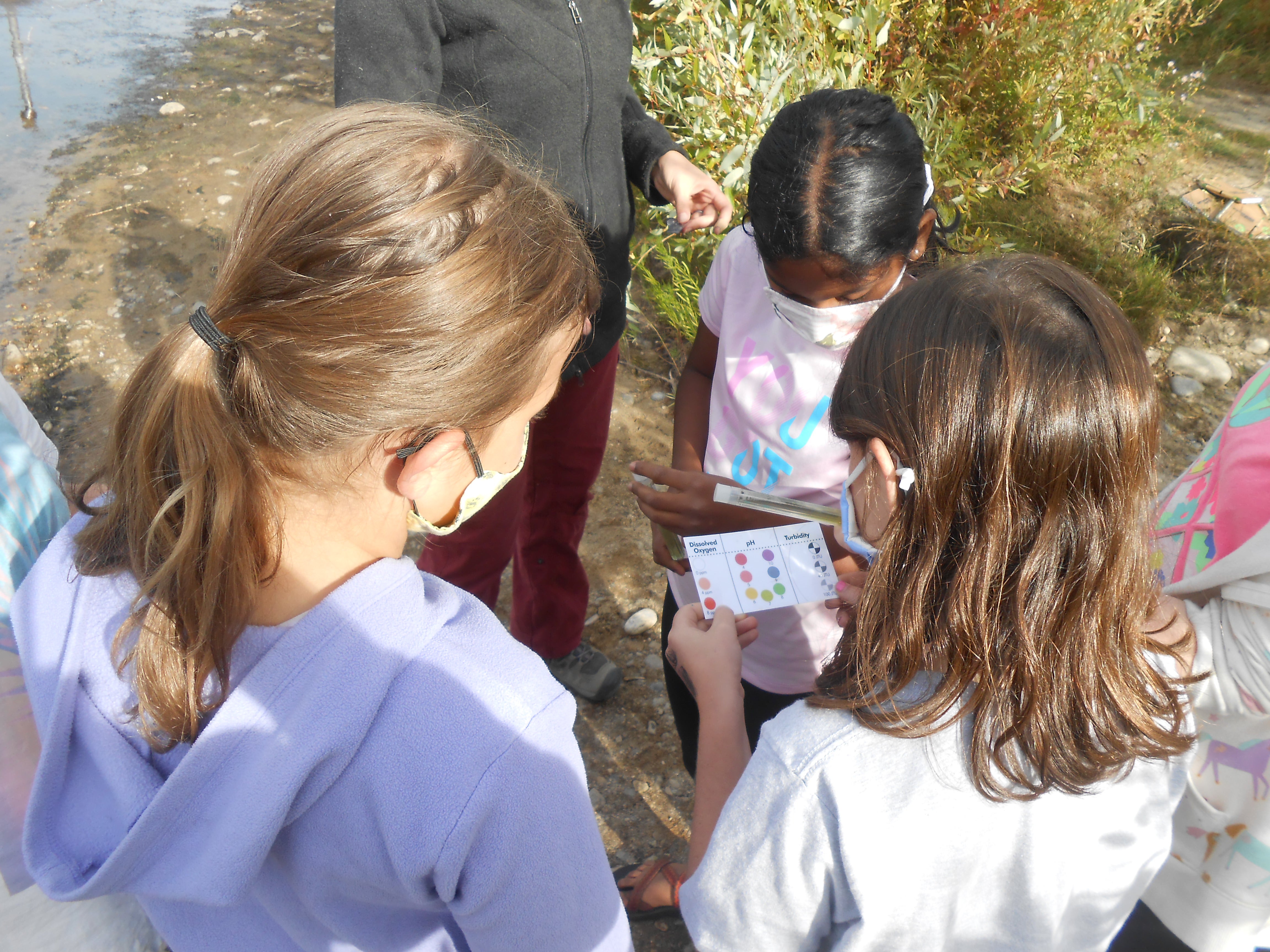
Their favorite part, of course, was searching for macroinvertebrates like caddisflies (order Trichoptera) and water boatmen (family Corixidae).
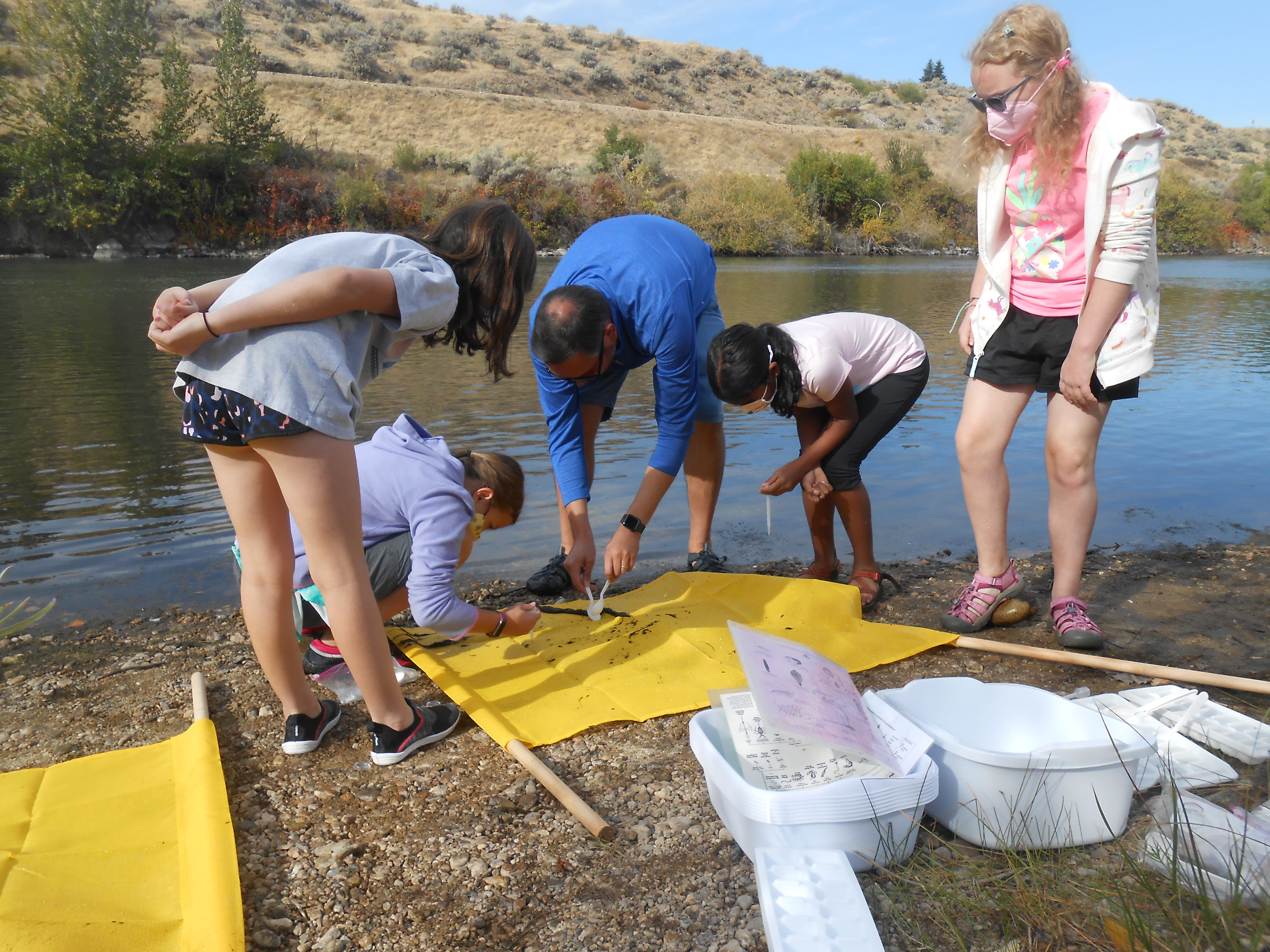
I can’t wait to look back on the data we collected before the project, and watch as the side-channel brings new life and changes to the beautiful Diane Moore Nature Center habitat.
Do you want to help us with restoration planting, or collecting data on the impacts of the side channel? Be sure to fill out our volunteer interest form now so that we can reach out to you next spring.
Thank You!!!
These research projects would be IMPOSSIBLE without our team of volunteers and interns. We’d like to thank our 2021 banding team: Anna Connington, Arlo Thomas, Barbara Howard, Carol and Dave Wike, Carter Strope, Charlotte Cumberworth, Christina Garsvo, Claire Pittman, Grace Middelhoven, Gretel Care, Jay Carlisle, Joni Clapsadle, Juliette Rubin, Katherine Newton, Lauryn Kirschner, Lucian Davis, Martin Cuntz, Patricia Blatter, Patti Guicheteau, Sage Morgan.
Our Habitat Restoration Team: Lead by Aaron Connolly, and students Breanna Medek, Clayton Allen, Emma Archey, Kim Caudell.
Our Boise State Service Learning Students: Camden Gallagher, Eliza Walton, Hannah Norton, Megan Collins, and Boise State Students from BIOL304.
Students from: Foothills School, Riverstone International, Vallivue Middle School, Payette High School, One Stone, Village Leadership Academy, Idaho Arts Charter, and The Sage School.
Plus countless community partners and volunteers who worked on planting, watering, and weeding this season.
This article is part of our 2021 end of the year newsletter! View the full newsletter here, or click “older posts” to read the next article.
Make sure you don’t miss out on IBO news! Sign up to get our email updates.